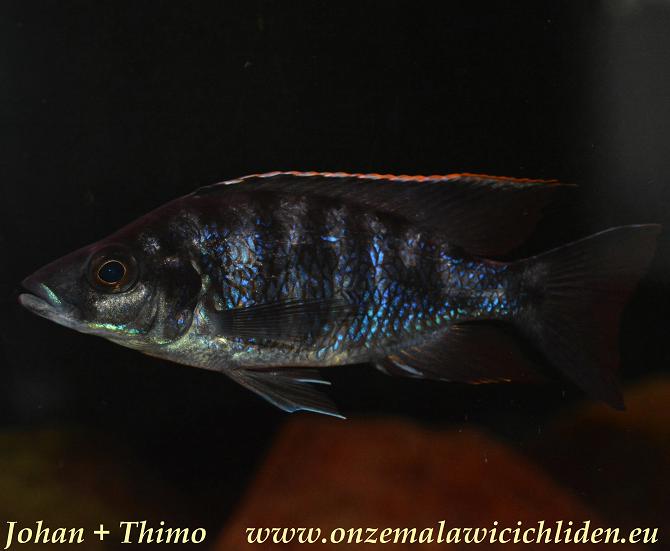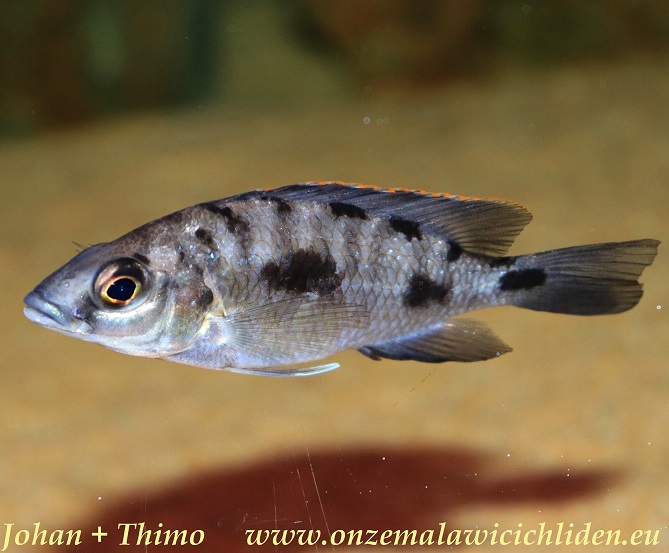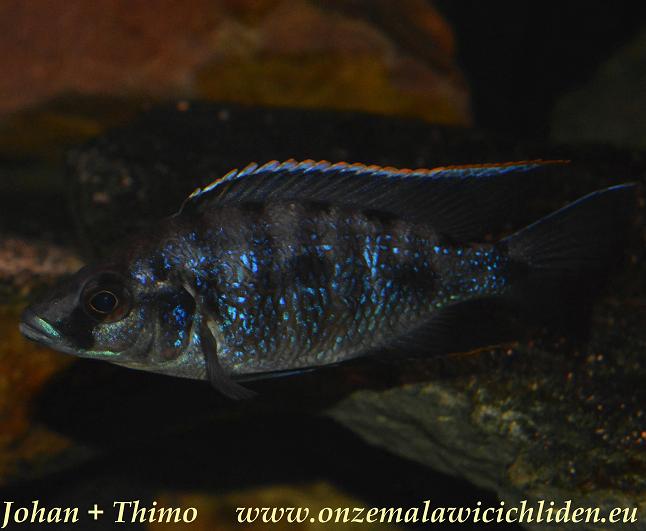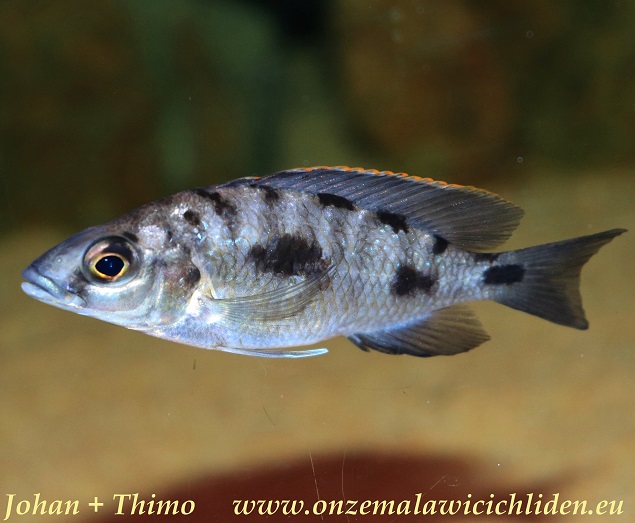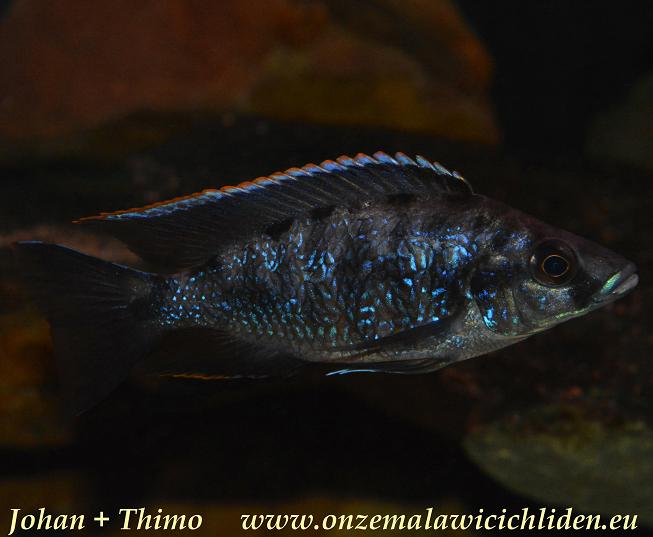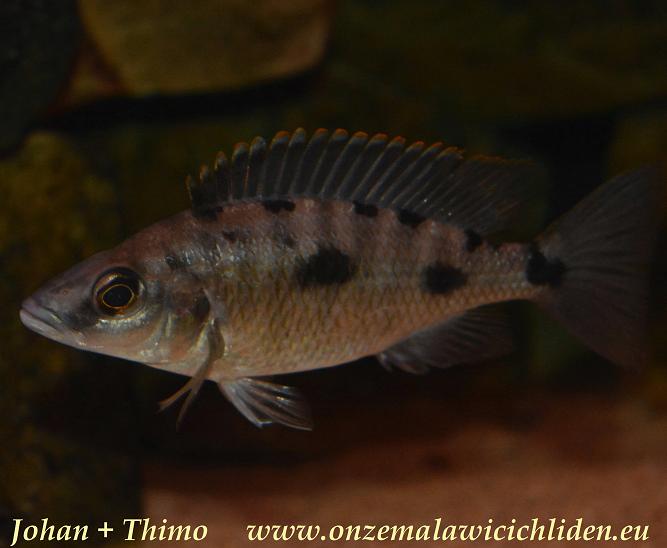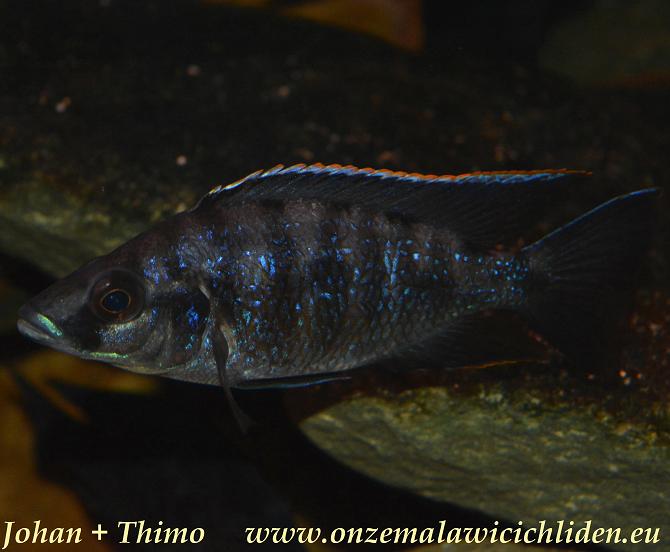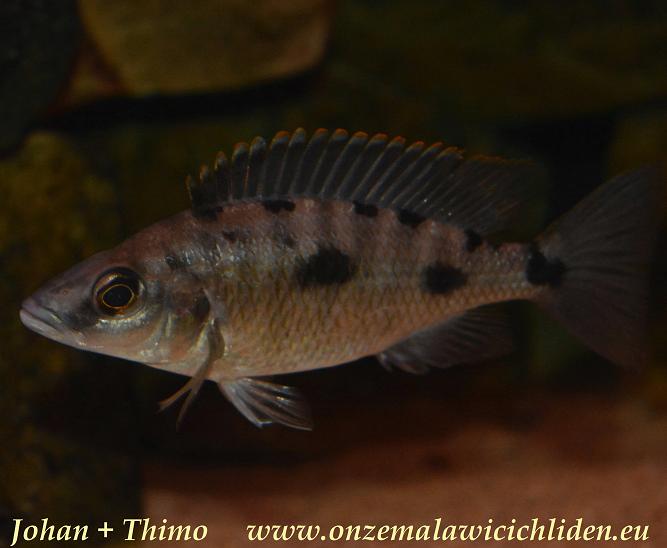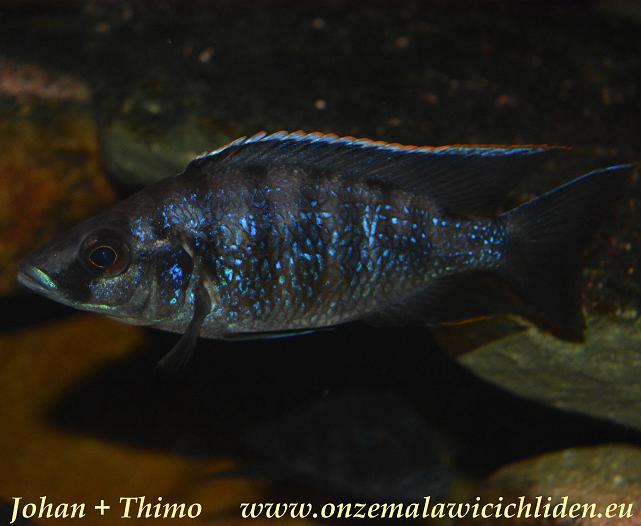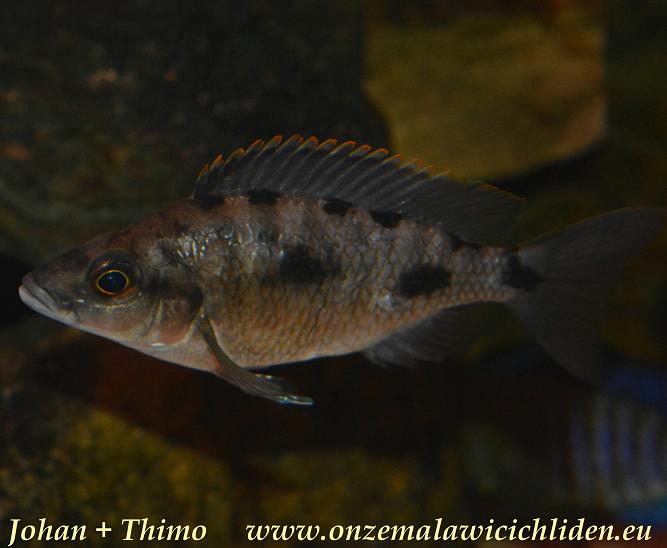|
Otopharynx lithobates walteri is a cave living species. They are living in big caves in rocky environments and can be found in the southwestern part of the lake near Nakantenga Island en Maleri Island. Not so long ago this species was first described as Otopharynx walteri and later as a variant of Otopharynx lithobates (new name is Otopharynx lithobates lithobates) however nowadays this species is considered to be a subspecies of Otopharynx lithobates with the probably temporary name Otopharynx lithobates walteri because there are clear color and form differences with Otopharynx lithobates lithobates; this all according the book of Ad Konings: Malawi Cichlids in their natural habitat, part 5. Of course it`s necessary to have some refuges in the aquarium in which they can hide. At the end of august 2018 I (Thimo) bought half a dozen of this species, two males and four females. At that time they were very young, the males were about 8 cm and the females about 7 cm. In the lake the males of these species can grow to 16 cm, in the aquarium however they can grow a little taller because of a good feeding. The males can then grow to about 18 cm, females grow to about 12 cm. One of these males and two females died a short time later, it wasn`t clear why. They showed themselves quite well. Up till then the remaining male was very tolerant against his females. The male was just very slowly starting to get some color however unfortunately I can`t see them growing up because I`m going to move towards another house through which I had to sell my tank and all of my fish temporary. They were also very tolerant against the other inhabitants and they have also been accepted by the other fish in this tank. Unfortunately the pictures here above are not showing a full coloured male yet. In the lake they are seeking the sand and eat faeces of other, mainly vegetation eating, fish. In the aquarium they were comfortable with any food. They took everything they got offered but mainly they got krill, mysis, shrimp-peas mix and sometimes artemia. |
